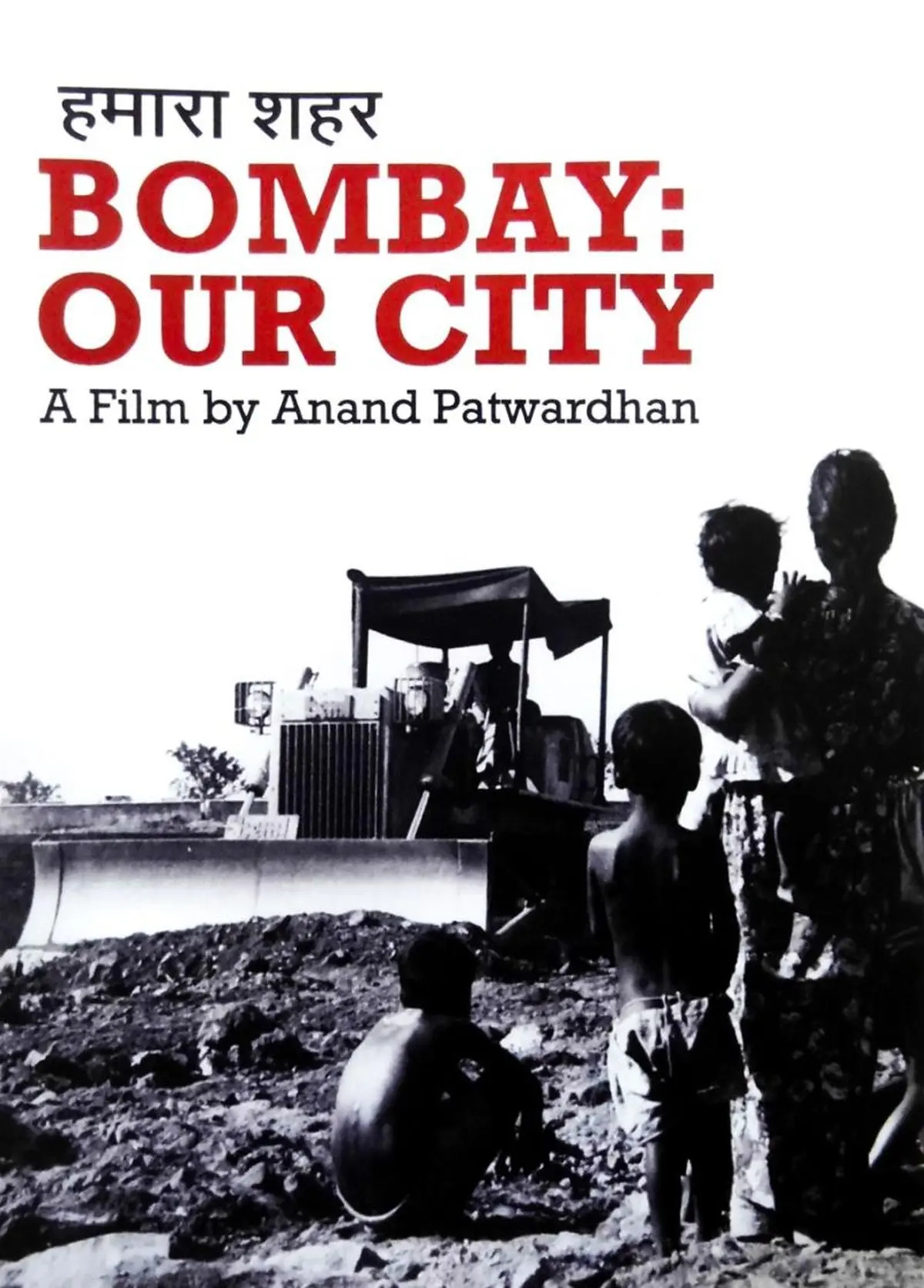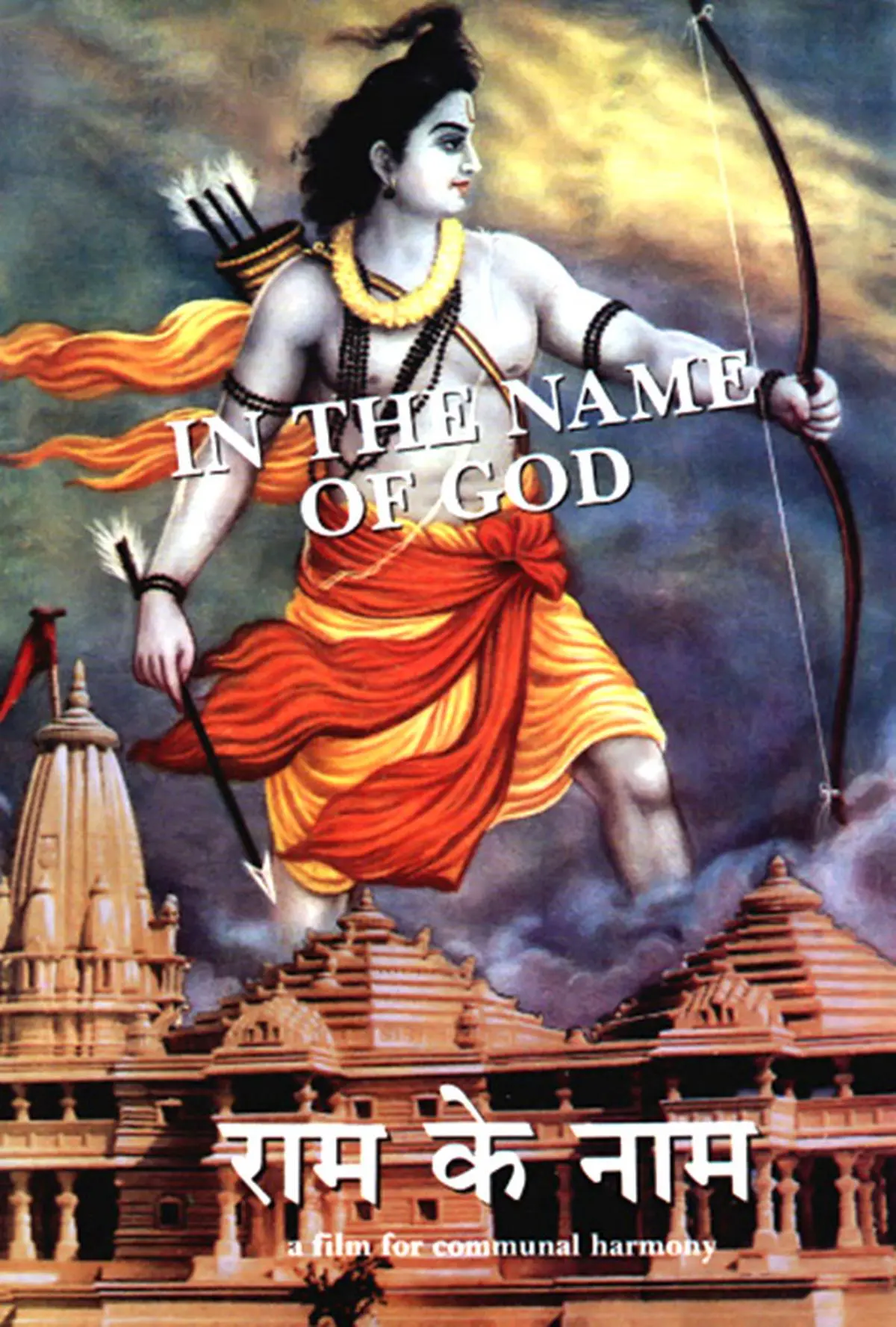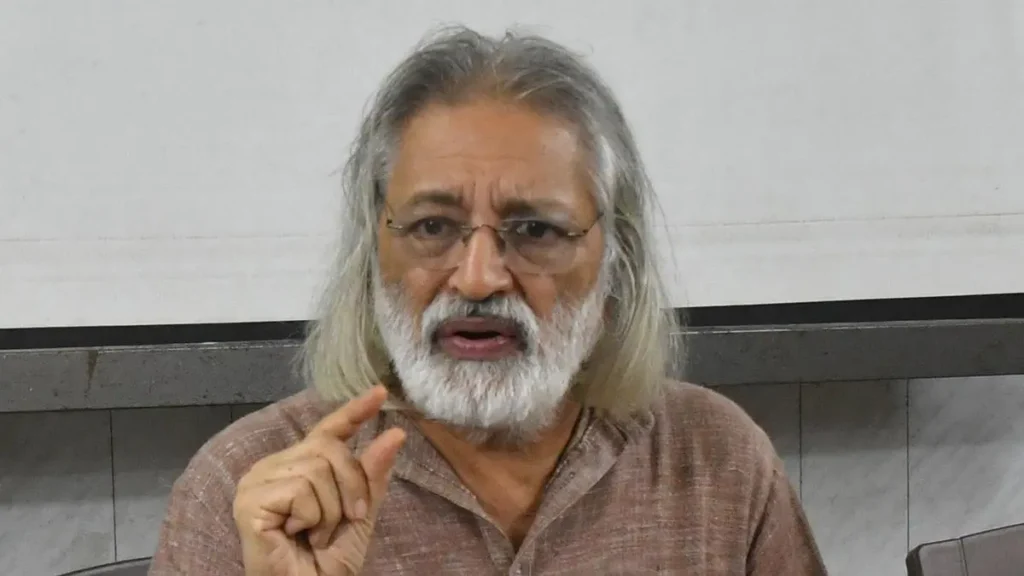Filmmaker Anand Patwardhan turned 75 recently. He has been described as “a kind of phenomenon in that he has all along faced official apathy, disapproval and, at times, censorship and open discrimination”. Perhaps, this is how it should be for any creative artist grappling with political abuses, social injustices, and economic disparities in a determined effort “to educate, expose, inform, reform and effect change in a resistant and otherwise unenlightened world”.
Patwardhan is one of India’s best-known and most respected documentary filmmakers today. He is admired across the subcontinent and beyond as a fearless and indefatigable activist; as a whistle-blower who devotes a large part of his time to writing on and speaking out against social evils. From communalism, class inequalities, and political humbug to working-class distress and gender/caste discriminations, all themes have been explored by Patwardhan with vision, energy, and courage.
Patwardhan came to the notice of socially-aware viewers with his early black-and-white political documentaries, Waves of Revolution (about the Jayaprakash Narayan-led mass movement in Bihar against Indira Gandhi’s authoritarian rule) and Prisoners of Conscience (about political prisoners held without trial in India’s overcrowded jails). The sensibilities of these documentaries made in the mid and late 1970s were expressed with a surer craftsmanship, and on a wider canvas, in Hamara Shahar (Bombay: Our City), made 40 years ago, in 1984-85. With this film showing the callous co-existence of immense wealth and dire poverty in Mumbai, Patwardhan grabbed eyeballs like never before.
Warts of Mumbai
Here the documentarist reveals the many warts of Mumbai hidden from public view by the assiduously cultivated image of the city as the dazzling commercial capital of India. From policeman Ribeiro to industrialist Godrej to civilian Sukthankar, a whole gallery of self-righteous eminences are held up to scrutiny and found wanting. Arguably, no film—documentary or fiction—has so effectively exposed the nexus between municipal moguls, policemen, politicians, and business dons that keeps Mumbai ticking.
Also Read | Anand Patwardhan: Dissent in the time of intolerance
Patwardhan himself described Hamara Shahar as “an essay on the politics of space and structure that has dictated the blueprint of our country’s irrational development; the film marks a turning point towards a more specific definition of the political documentary which doubles as sociological comment; the film unwittingly led to the evolution of a movement towards the formation of a counter-cinema”.

Hamara Shahar revealed the hidden face of India’s dazzling commercial capital.
| Photo Credit:
By Special Arrangement
Using an engaging interrogative style that is all his own, Patwardhan uses diverse elements to build Hamara Shahar block by block. Some of these elements are extensive live footages, occasional dramatic enactments, still photographs and groups singing in the open—each device more effective than the other in portraying working-class resistance to state and class tyrannies. Patwardhan has a deceptively simple style that carries the practice of documentary angst several steps forward from where the likes of S. Sukhdev or Loksen Lalwani left off. While the latter were important early starters, they were not averse to the occasional compromise under pressure, official or otherwise. But Patwardhan remains unbending in his treatment of the explosive material he handles.
Histories of uprooting
In Hamara Shahar, the detailed coverage of the demolition of slums and pavement-dwellings by the municipal corporation, often with the support of elite groups, brings to the fore the histories of countless uprooted families. Many of them migrated to Bombay as a result of losing their village homes. When they manage to find a toehold in the city, often as construction workers with no union to protect their interests, they find their makeshift homes razed to the ground on government orders. In the documentary, select representatives of the dispossessed people narrate harrowing tales of humiliation and torture that should never be the lived reality of any civilised society. And yet it has been, all over the country, in the past four decades.
A woman, a grandmother, says animatedly in Tamil how her family and others are treated like animals by those who come to demolish their homes. A younger woman rails at the press whose representatives come to the demolition sites but rarely visit the displaced families later. A quieter but agitated man, hobbling on one leg, argues in a reasoned manner why the government or the law should take a more compassionate stance. Each narration is more revelatory than the last. The sufferers seem to accept that the stone-hearted cannot be made to change their ways.

Patwardhan’s documentary Ram Ke Naam (1991) was on L.K. Advani’s rath yatra.
| Photo Credit:
By Special Arrangement
Still, they are not demoralised completely because they have the solidarity of the “space-less”. Hindus, Muslims, Dalits become one in the great churn, sharing food and misfortune. Images showing uprooted families coming together in the wake of man-made or natural disasters are an indictment of the rhetoric on Constitutional and legal guarantees for all. These images are also a study in irony, showing the homelessness of the very people who build gigantic hotels and housing societies for the rich.
Solidarity of the space-less
The solidarity of the space-less is portrayed in many scenes of great depth. One moving scene relates to the death of an infant in a Muslim family. The mourning of the inconsolable young mother mixes with the silent walk of the father with the dead child in his arms. The cries of the mother are juxtaposed with the silence of the marchers to the burial ground through Mumbai traffic, which cannot care less for this or any other poor man’s tragedy.
Also Read | Anand Patwardhan: ‘Silence is no longer an option’
Patwardhan’s filmography has repeatedly highlighted the fate of the poor, and by doing so, invited the wrath of the state. Thankfully, however, the law courts have come to his rescue, making it possible for him to continue his work.

Jai Bhim Comrade covers the history and contemporary facets of the Dalit movement.
| Photo Credit:
By Special Arrangement
To gauge how effective Patwardhan has been in driving home his point, one has to attend the public screenings of his documentaries in the spaces where they are filmed. Forty years ago and ever since, thousands of viewers have flocked to the screenings of Hamara Shahar in slums and public places.
Important voices
The reaction has been the same to Patwardhan’s 2011 documentary, Jai Bhim Comrade. Unmanageable crowds have stood for hours in different parts of Mumbai and its suburbs watching thisfilm on the history and contemporary facets of the Dalit movement. The masterpiece has as much to do with the individual and collective identities of present-day Dalits as with the Indian society in its present state of moral bankruptcy. The seeds of Jai Bhim Comrade lie in Hamara Shahar, which graphically brought out the plight of the oppressed, and by doing so, emphasised the need for people to unite as one to make their grievances heard.
Anand Patwardhan’s “imperfect” camera continues to search for an elusive new order where religious and political intolerance is a thing of the past, and where reason, hope and compassion rule. Till then, Patwardhan’s Hamara Shahar and other documentaries mark the filmmaker’s firm refusal to accept things lying down.
Vidyarthy Chatterjee writes on cinema, society and politics. He is the author of Despair and Defiance: The Worker in Indian Cinema.
Source:https://frontline.thehindu.com/arts-and-culture/40-years-of-hamara-shahar-anand-patwardhans-bold-lens-on-bombays-inequality/article69438391.ece

